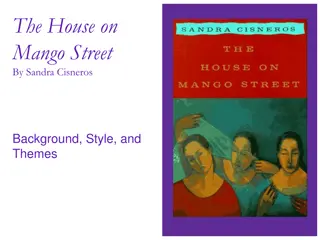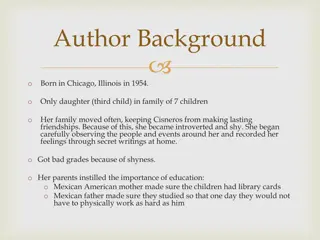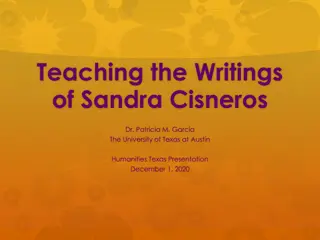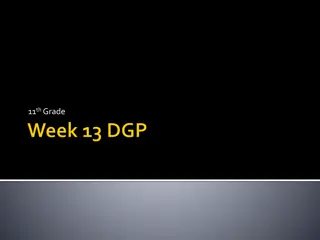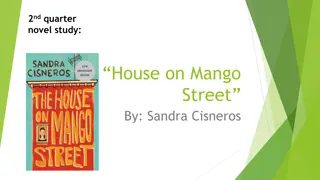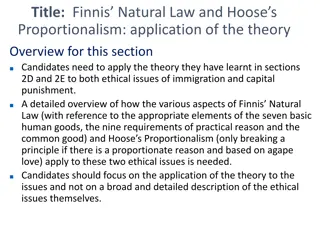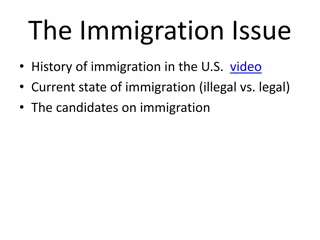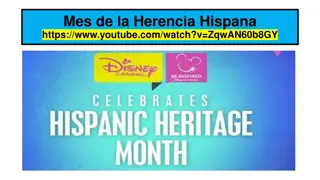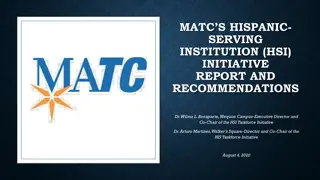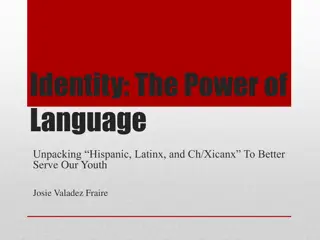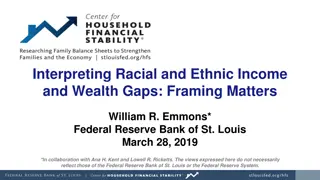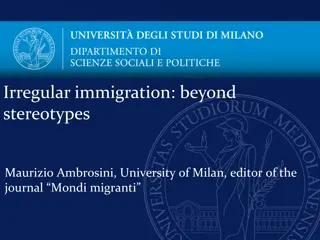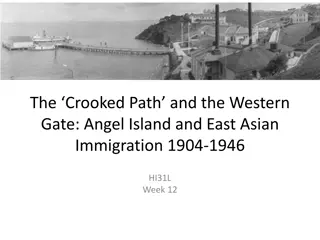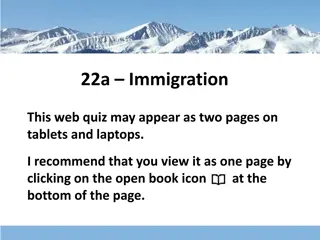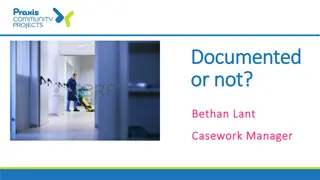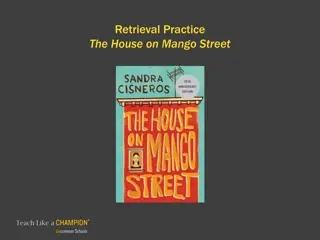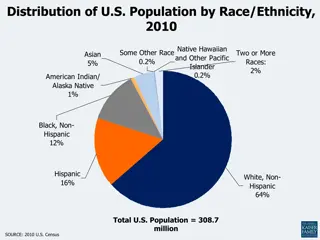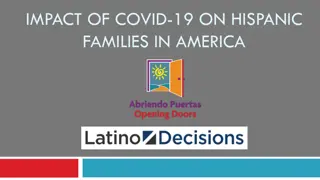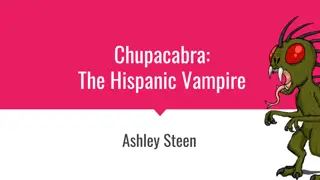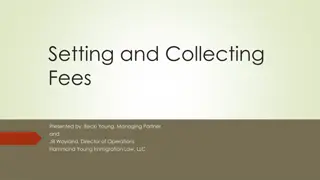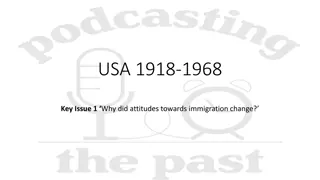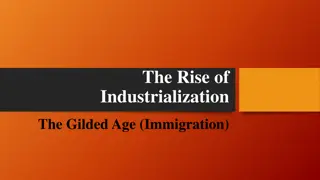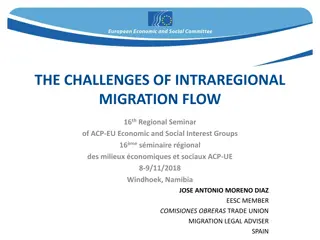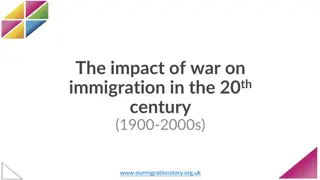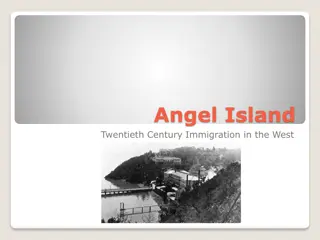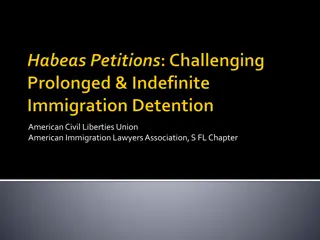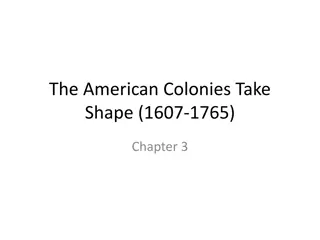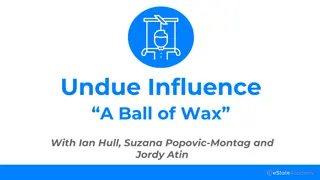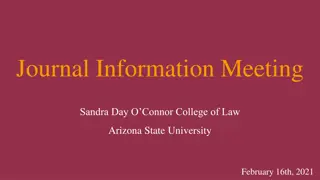Hispanic Immigration Timeline & Sandra Cisneros Influence
Explore the timeline of Hispanic immigration to America from the 16th century to the mid-20th century, highlighting significant events such as the Treaty of Guadalupe Hidalgo and the Bracero Program. Learn about the cultural contributions of Hispanics and delve into the author Sandra Cisneros and her impact through her works.
Uploaded on Oct 06, 2024 | 0 Views
Download Presentation

Please find below an Image/Link to download the presentation.
The content on the website is provided AS IS for your information and personal use only. It may not be sold, licensed, or shared on other websites without obtaining consent from the author. Download presentation by click this link. If you encounter any issues during the download, it is possible that the publisher has removed the file from their server.
E N D
Presentation Transcript
Your Assignment: With your group, create a presentation on an assigned culture and author. The presentation will include the following: 1. A timeline of emigration of the culture, including important emigration waves, reasons for them coming to America, and cultural contributions made to our society. 2. Author bio 3. Short Story Analysis
Hispanic Immigration with Sandra Cisneros Eleven TEACHER EXAMPLE PRESENTATION
Important NOTE This presentation is intentionally NOT perfect. It generally follows directions, but the level of detail and quality varies; some slides are done better than others. What criticism would YOU give this? How can you rise to AND exceed the level of this presentation?
Timeline: 1565: Pedro Men ndez de Avil s founded Saint Augustine, the first European settlement to what is now the United States. This introduced Catholicism and the Spanish language in present-day Florida. 1598: The Spanish settle New Mexico 1607: The colony of Jamestown is founded in Virginia 1776: The American colonies in the East declare independence from Great Britain 1776: The Spanish found San Francisco in the West.
Timeline: 1848: Under the terms of the Treaty of Guadalupe Hidalgo, Mexico ceded to the U.S. more than 1/3 of its former territory, including what are now the states of California, Nevada, Arizona, New Mexico, Colorado, Texas, and parts of several other states. This treaty offered blanket naturalization to about 75,000-100,000 former Mexican citizens who chose to remain north of the new border.
Timeline: 1900-1930: The accelerated pace of economic development in the American West (after the expansion of railroads), along with the outbreak of the Mexican Revolution in 1910, brought at least 100,000 Mexican immigrants. In these decades, the number of Mexican immigrants is conservatively estimated to have grown from 100,000 to 639,000. 1917: Puerto Ricans are granted U.S. citizenship. 1930 s: The US forces between 300,000-500,000 Mexican Americans during the Great Depression.
Timeline: 1943-1964: The Bracero Program brings in an annual average of 350,000 Mexican workers to keep up with labor demands. 1946: Mexican Americans in California win a lawsuit to dismantle segregated school systems (8 years before Supreme Court decision in Brown v. Board of Education) 1954-1958: Operation Wetback: an initiative to locate and deport undocumented workers. 3.8 million people of Mexican descent are deported. 1940 s: Latinos are the largest ethnic group to serve America during WWII. 1959-1980: 700,000 people fled Cuba after rise of Fidel Castro
Timeline: 1970 s-1980 s: Civil wars and violence, Central Americans fled to the U.S. in the hundreds of thousands. 2013: Hispanics make up about 1/6 of the U.S. population (about 51 million people). They are projected to reach 30% of the nation s population by midcentury.
Our Top 3 Contributions From names of cities to words like cafeteria, macho, mustang Americans often don t even know they re speaking Spanish. Boosted the economy. Latinos are the ethnic group most likely to start a business, according to a recent report. Chorizo, tapas, empanadas Latin Americans gave us awesome food.
Author: Sandra Cisneros Born in Chicago and currently living in Mexico Writes short stories and novels about hispanic women and families Her best-selling novel, The House on Mango Street, a collection of connected short stories, is common required reading in middle and high schools. Source: http://www.sandracisneros.com/bio.php
Our Opinion of the Story We liked it overall... We enjoyed the childlike style of narration, and even though we couldn t relate to the specific experience with the sweater, we could relate to some of the emotions of feeling embarrassed or feeling like multiple ages at once. Though not the most exciting plot, the dialogue makes it a quick read. It s a bittersweet story, but it has beautiful language!
Comparison to other Fiction Eleven by Sandra C. Structure: Narration, then flashback telling the sweater story, then circular ending back to the discussion of age Hispanic culture Coming of age story about maturity, vulnerability, and social conflict Female narrator is 11 years old in the story, set in a classroom and is embarrassed by teacher and peers Fish Cheeks by Amy Tan Structure: briefly mentions crush on a boy, and quickly transitions into the story of the dinner party; flashback is more subtle Chinese culture Coming of age story about culture and being proud of where you come from Female narrator is 14 years old in the story, set at her home over a family dinner at Christmas, and temporarily embarrassed by her family s behavior
Non-fiction Connection The ages of 11-14 are considered early adolescence , a time of physical and mental transition as children s ability to reason, see long-term consequences, and see outside themselves develops. It is probably not a coincidence that Cisneros chose this age - a sometimes awkward and/or confusing one - as Rachel s age during a story that is all about discomfort with age and maturity. Source:http://www.webmd.com/children/tc/growth-and-development-ages-11-to- 14-years-overview
Authors Theme/Message Cisneros is suggesting that vulnerability is present in all ages and is a part of the human experience; it doesn t automatically disappear with age or maturity. o Rachel says that even adults still cry sometimes o The story is an example of how life isn t easy, and at all ages we will have to overcome adversity. o If it s true that you re still ten... underneath , then that suggests that your immaturity never fully disappears.
Quotes Famous Quote: What they don t understand about birthdays and what they never tell you is that when you re eleven, you re also ten, and nine, and eight.. (1). Difficult part: The last paragraph uses the simile of a red balloon to describe how she is feeling, and it s a bit ambiguous. (Does she really want to be older, or just wish today hadn t happened? What does she think the future will be like when she s older? Is she right?)
Literary Devices 1. Bildungsroman: this is a coming of age story about Rachel s gradual process of growing up. 2. Dramatic irony: we know the sweater isn t hers, but neither we nor Rachel can express that to the teacher. 3. Man vs. Self conflict: Rachel is battling her own immaturity, even wishing she were older. 4. Indirect Characterization: We hear Rachel s inner thoughts and events (instead of being told from an omniscient narrator what she looks like) 5. Foil Character: Sylvia Salvidar is a classmate who Rachel might be jealous of and is a contrast to Rachel because SHE is actually able to articulate things to adults. (The two girls are, in many ways, opposites.) 6. Unreliable Narrator: Rachel s perception of what happened could be flawed 7. Simile: Rachel says that the way you grow old is kind of like an onion...
Questions for the Class 1. What could the red sweater symbolize? 2. How is Rachel both mature and immature? 3. Look at the ending. Why does Rachel wish she were older? What does she want?
Q&A We are now happy to answer at least 3 questions that the class might have for us! Please ask us serious clarification questions that will help you understand the story better (and therefore do well on the quiz).


